Last week I went out one morning and saw the gloriously blooming laburnum tree below. I stood under it for several minutes, enjoying the movement and the abundance of yellow and green above my head.
Later that day, entirely unconsciously, I saw its influence show up in a painting.
I shared the image below on Instagram, and it prompted a little discussion about where we get our inspiration as artists and creators, and how what we’re looking at can affect our work, and it got me thinking.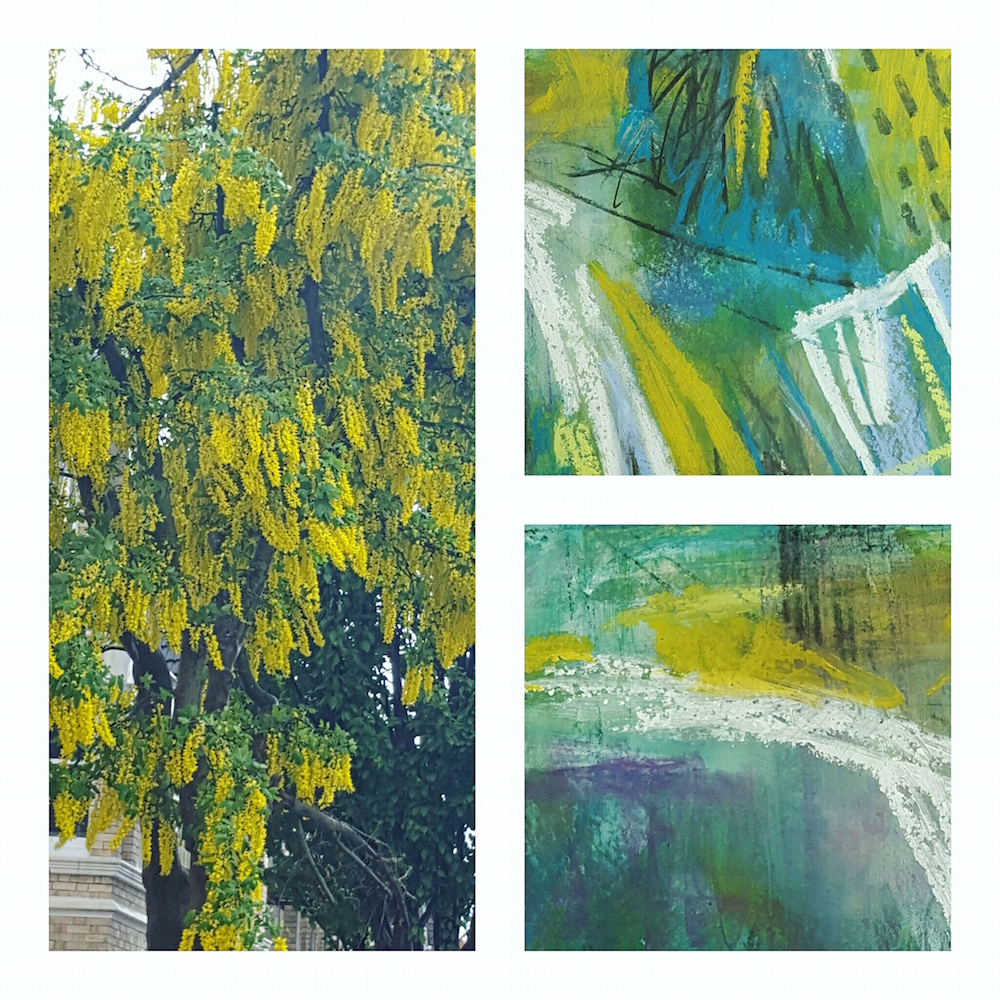
I think it’s inevitable to a degree that a lot of what we look at for inspiration will be similar, or at least in a similar field, to what we create.
I love to look at expressive, loose, free art, with painterly brush strokes and certain colour palettes, particularly abstract landscapes.
When I was in my last figurative phase, I looked at a lot more figurative art. I still do look at and love figurative art, but it currently features less in my visual searches and feeds.
Recently though, something’s been bugging me. While I know that I choose to follow people who make certain kinds of art, I’m also seeing an awful lot of very similar work out there.
Now obviously I realise that there’s nothing new under the sun, and that we will all inevitably be influenced by what we’re surrounding ourselves with day to day.
Anywhere you go, on or offline, groups of people doing similar things will gather and share and find support and camaraderie in their shared interests and activities. And that’s brilliant. We need that. Instagram is my single richest place for visual inspiration and creative connection and support.
But so often I see that start to slide into homogeneous work, so my Instagram feed – which is where I experience this the most because it’s a daily tool for me – starts to look like variations on a very limited theme.
I find this partly annoying, partly disappointing. The annoying part is my own fault; if I want to see less similarity I need to diversify the kinds of accounts I’m following! Although the recent algorithm changes have made it less easy to control what you see.
The disappointing part is I guess a bit judgmental, but sometimes I find myself looking at an account full of a certain type of art done in a certain type of way with certain colours, and I just feel deflated. I can see much more than a passing influence of at least one or two very popular artists, and I just think, oh friend, you are not making your own work here.
I’m not saying I never get influenced by the ‘influencers’ as they’re often called. I follow certain artists with large accounts and a very specific aesthetic, and I might be inspired by a certain type of photo style they use, or I might want to try a certain type of mark or colour palette I see in their work.
But those things are absorbed into my own work {or rejected because they don’t fit with my own style, aesthetic or way of doing things}. I make them mine or I don’t use them.
I get that when you’re starting out you don’t know what’s yours, are not sure what your art process is, and you look to others for ideas and inspiration. I did it myself. But there comes a point where you have to go beyond that kind of surface use of what you love.
You have to go deep into yourself and think about what you have to say, and you have to give a lot of time for that to evolve. Which it does, if you keep going.
But it’s not necessarily easy, and I think sometimes people stop too soon, often due to inexperience and lack of confidence, and settle on a style they love and that they’ve seen to be popular. I find it particularly disappointing when I see people selling this work.
Apart from the fact that it’s upsetting for established artists – who have put their ten thousand hours in – to see their work plagiarised {and sometimes without even an attempt at disguise}, I feel uncomfortable looking at someone talking about the paintings they’re making as if they thought up the concept, techniques, style and colour palettes, when it’s blatantly obvious that their work looks like that of someone else we’ve all seen to be the originator of it.
I have to wonder if they’re at all aware of what they’re doing, how it’s even possible that they’re not, and if they are, how they can possibly feel ok about that. It’s such a disservice to the artists they emulate and to themselves.
I found a post by Megan Auman the day after sharing my tree post that really spoke to this and also offered some very sensible and practical advice, I felt. I recommend reading her post if you’re looking for new ways to take in inspiration that will lead you to your own work.
Here’s what Megan said about inspiration.
“Taking in inspiration is the key to creative energy, in much the same way that taking in food is essential for life.
But just like with food, the creative energy you put out is in direct proportion to the kinds of inspiration you take in. Take in a diverse and nutrient rich blend of influences and it becomes easier to create a unique and distinctive body of work. Fail to do so, and the result is mediocre products that look like so much of what is already in the marketplace.”
{My emphasis.}
I particularly liked Megan’s point about something she calls ‘scan and focus’. She visits a lot of museums, and likes to do a quick whip round before honing in on something that catches her eye and then really looking at it.
This is so different from absorbing hundreds of images for a second or so each and ending up with a very superficial form of inspiration; it becomes all aesthetic and very little meaning, because we’re not going deeper into ourselves with it.
Being able to ‘like’ things by double tapping or clicking a ‘like’ button means we can skip and skim, which is kind of like fast food. We need complete and nourishing meals to really produce our best, truest, most original work.
As a result of all this, I’m now more consciously looking outside my usual areas for inspiration, like that lovely laburnum, and exploring the Instagram feeds of people whose work is nothing like mine. It’s already proving interesting and inspiring in ways that won’t lead me to recreate what’s already out there, and that in itself is invaluable.
How do you find your inspiration? How does it show up in your art process? Do you find that sometimes you’ve inadvertently copied something you’ve seen, or a style you’ve been enjoying? I’d love to hear your perspective on this!
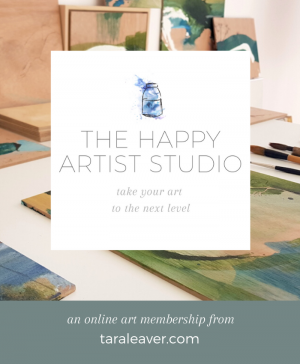 And while we’re on the subject of making your own work, you might like to take a look at The Happy Artist Studio. It’s a membership for artists containing all my courses, a private community, and a monthly topic to explore as you develop your work and yourself as an artist.
And while we’re on the subject of making your own work, you might like to take a look at The Happy Artist Studio. It’s a membership for artists containing all my courses, a private community, and a monthly topic to explore as you develop your work and yourself as an artist.
The focus of all my courses and support is creating a solid foundation of ‘you’ from which to make the art that only you can make, and that is necessary for your own unique self expression and wellbeing. Click here to find out more!


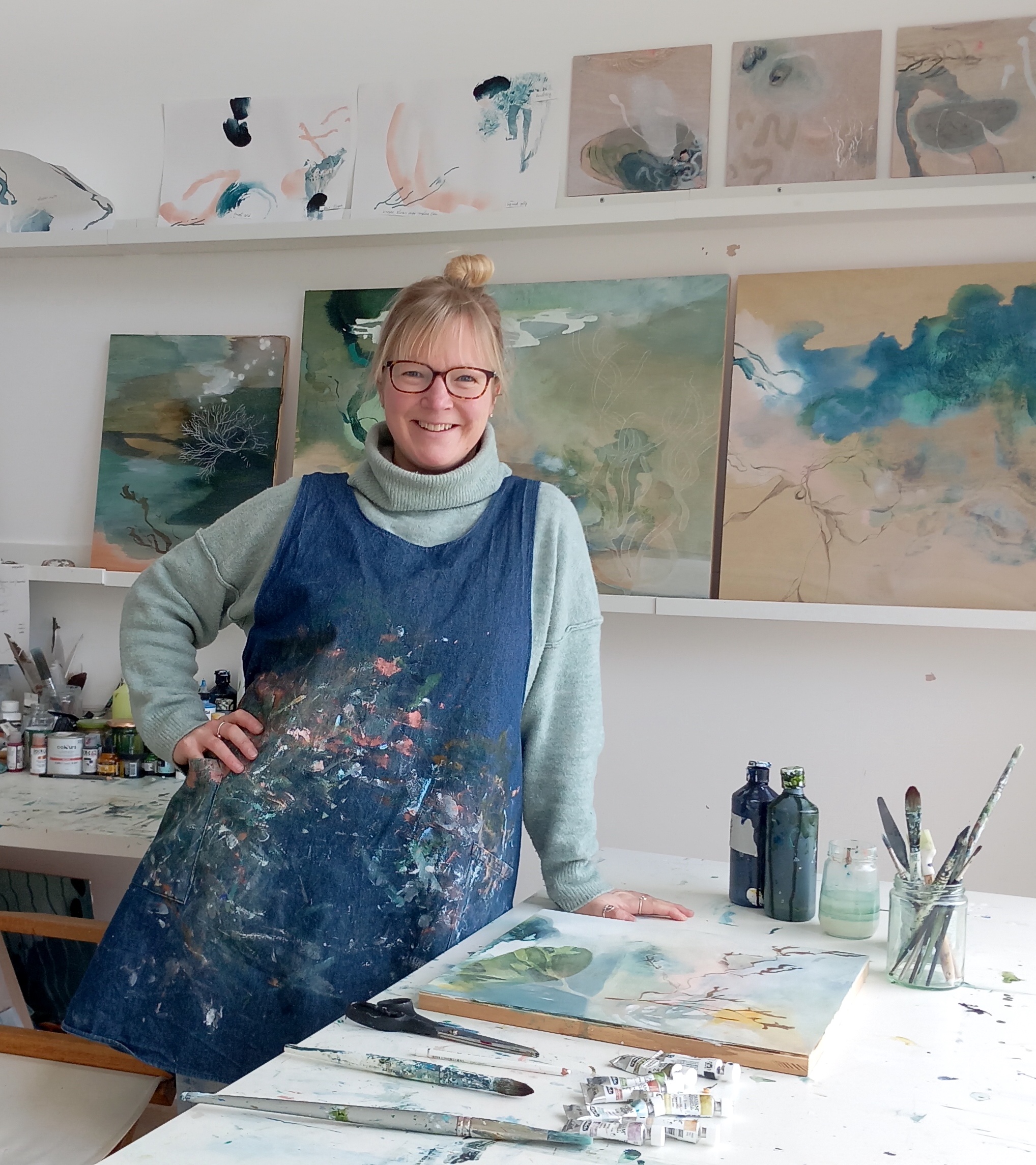
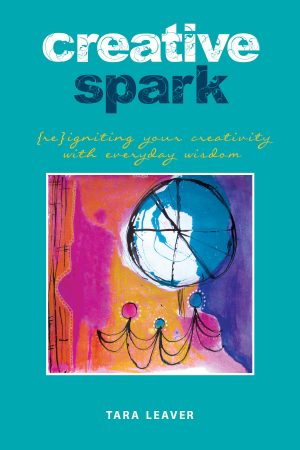
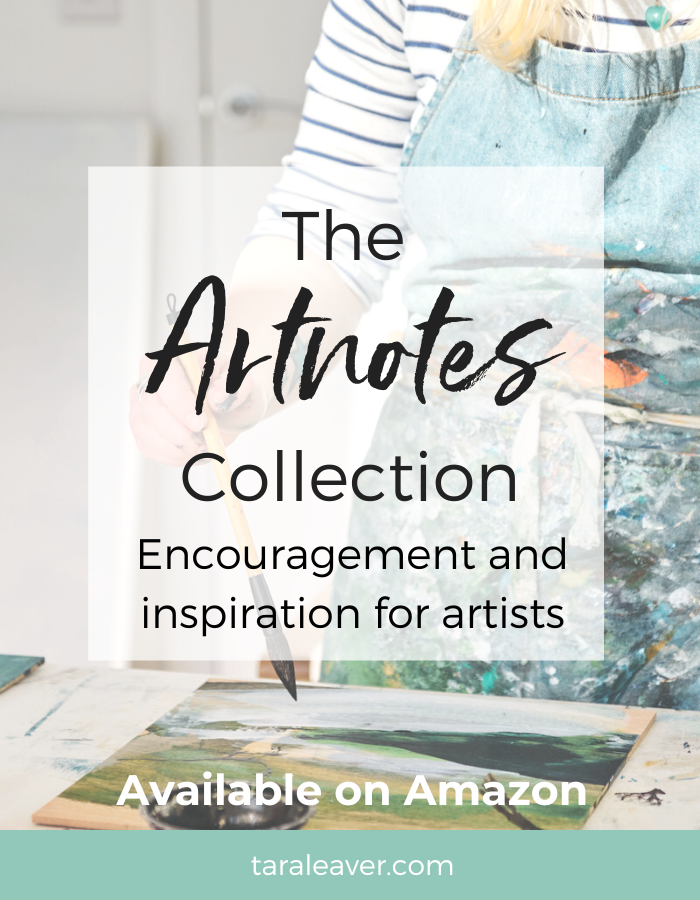
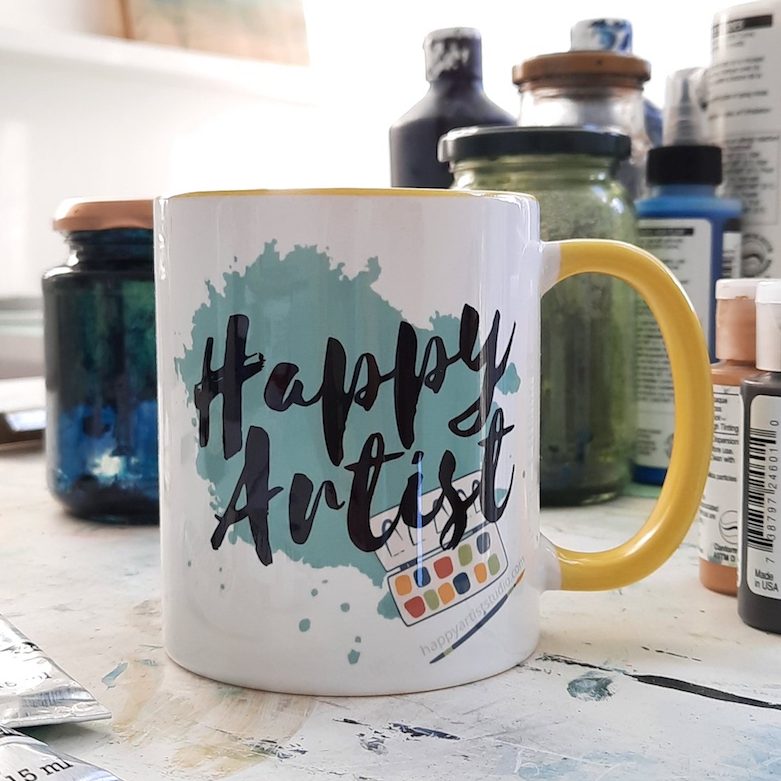
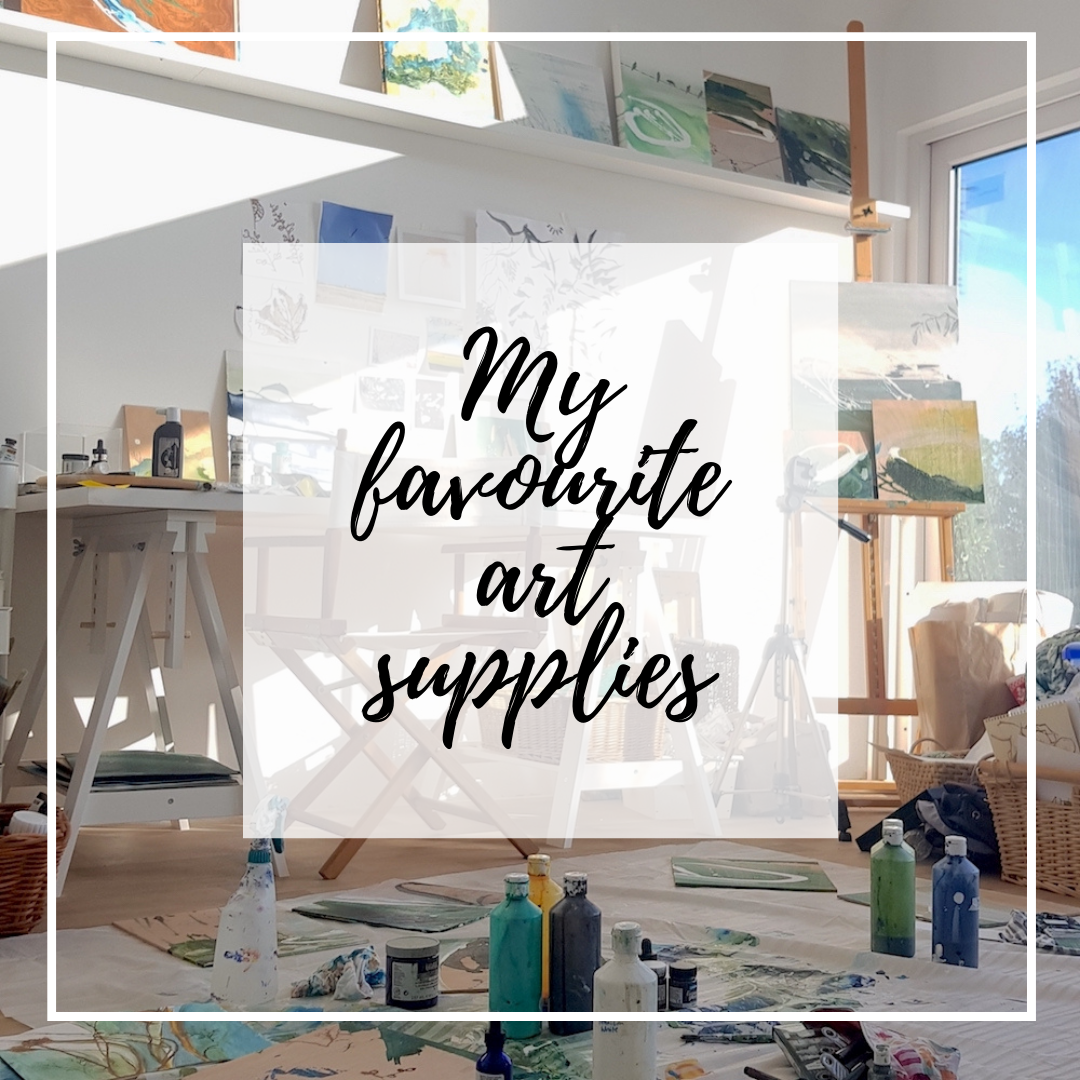
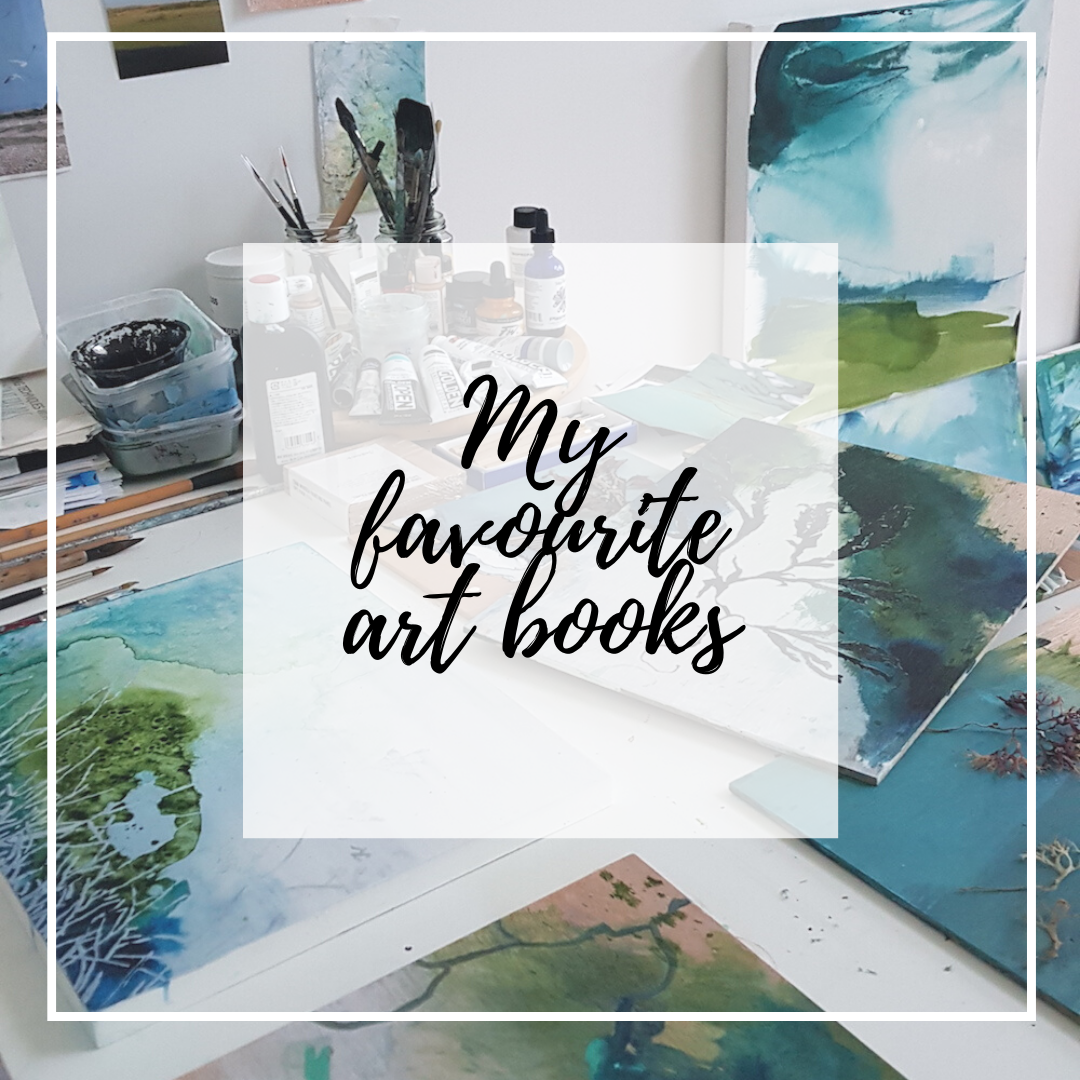
Love this Tara and agree on many levels. I cringe when I see artwork shared (especially if for sale) that is clearly the product of being in certain classes or copying the full style of a well known artist…
I do love the inspiration on Instagram though and screen shot things often to remind me of a colour combo or a mark I like. I also take in photography and non art shares that trigger something in me (again it is usually colour palettes or shape or marks).
Yeah, it does seem to be a bit of an epidemic, probably because social media makes everything so accessible! Like you, I find Instagram an incredible resource for all kinds of inspiration and support though – like with anything it’s about finding your particular groove {which in my experience is constantly changing anyway!} and staying true to your own vision, to use a very hackneyed phrase. Love what you said about the less obvious places you find inspiration too; it’s the same for me. I follow photographers, ceramicists, and people just sharing snippets of their lives. Inspiration is everywhere, truly, once you know how to adjust your ways of seeing.
Loved reading this. I’m trying to find who I am as an artist. Learned so much from you just today – my first exposure. Excited to learn from you and to grow as an artist. Very, very pleased to have found you.
Ah thanks Dee Anna, that’s so good to hear! Welcome. 🙂
Dear Tara. To me it is so important to make art from my heart and own surroundings. The painting must tell me a story that touches my soul and hopefully the heart of the viewer as well. I am fortunate to live on a sheep farm in the Karoo and inspiration is just everywhere in nature, the animals and the people. Although I am a student my favourite paintings are the ones I painted from photographs I took myself. It is so rewarding to see a painting and be able to tell it’s “story” and I love every painting as if it is one of my children. ……. not a chance of selling anything!!!! Thank you for your regular inspiration and good advice. I inspires me more than you will ever know.
I am starting classes tomorrow with George Gibson who lives in Bethulie and I am very excited about the prospect. He is a well known artist in SA and I hope I can also find my style and FLY! I know him since 2008 but have never had the courage to attend his classes. Please cross all your fingers for me….I feel so inadequate and beginnerish!!!!
Hi Nita – that’s such a good point that working from your own photos brings a story to a painting. How exciting to be taking a class with someone you admire! Being a beginner is a great place to be – you can just soak it all up like a sponge. 🙂
Yes! I had to be really intentional about who I followed on Instagram because everything in my feed was looking so similar. There’s a very particular aesthetic that seems to be sweeping the platform and I kept getting swept up in it. But that style is not me and I have to keep reminding myself of that. It seems like everyone teaching how to use Instagram for business is advocating a specific style, but that’s not necessarily what I want to see, or what I want to put out there. Thanks for the reminder!
Yes exactly! You put it so articulately Stephanie. 🙂 It can be hard not to get swept up into that particular aesthetic {think I might know the one you mean 🙂 }. I think in a way we do have to keep coming back inside ourselves to make sure we’re staying true to ourselves and our own aesthetics and message.
I must admit i had not thought much about how my visual inspiration translates onto a canvas. I guess For me its the feelings i translate into my artwork as colour. However i love what happened for you with that tree and how it seemed to abstractify itself onto your canvas ever so slightly. Think i might intentionally try this for play. Your very insightful thanks for sharing.
There are so many ways to take inspiration and translate it into art – I guess that’s one of the magical things about it!